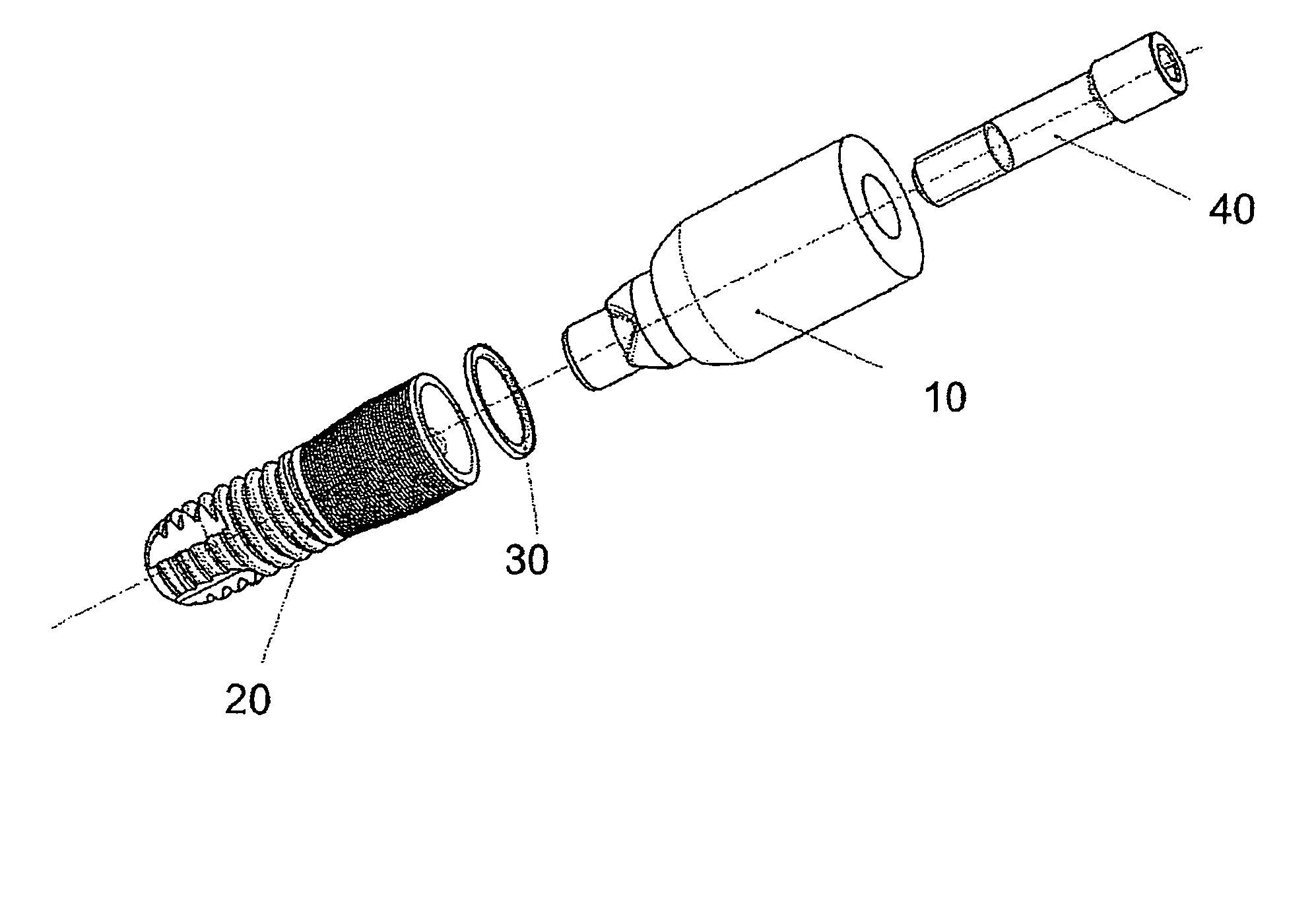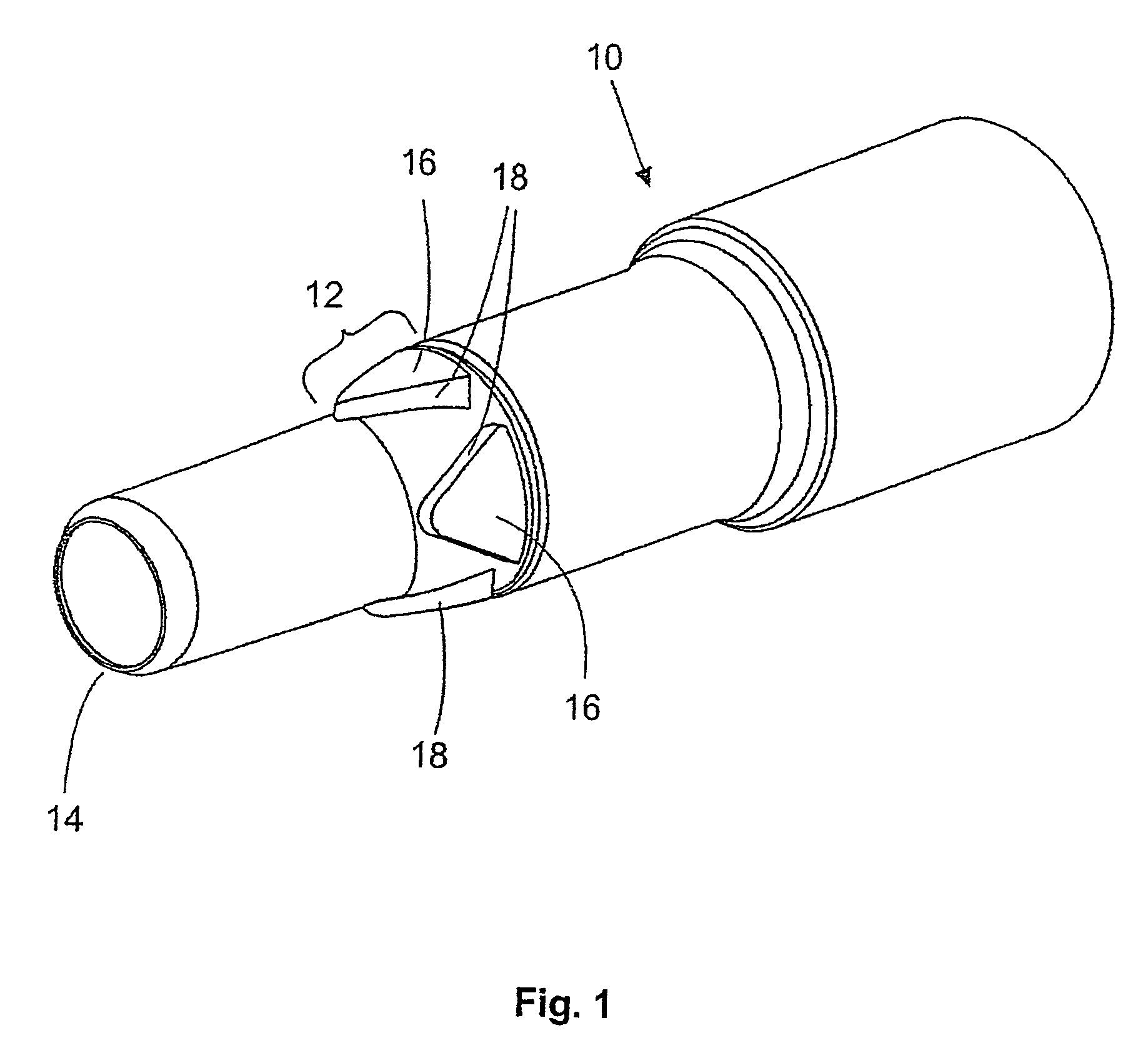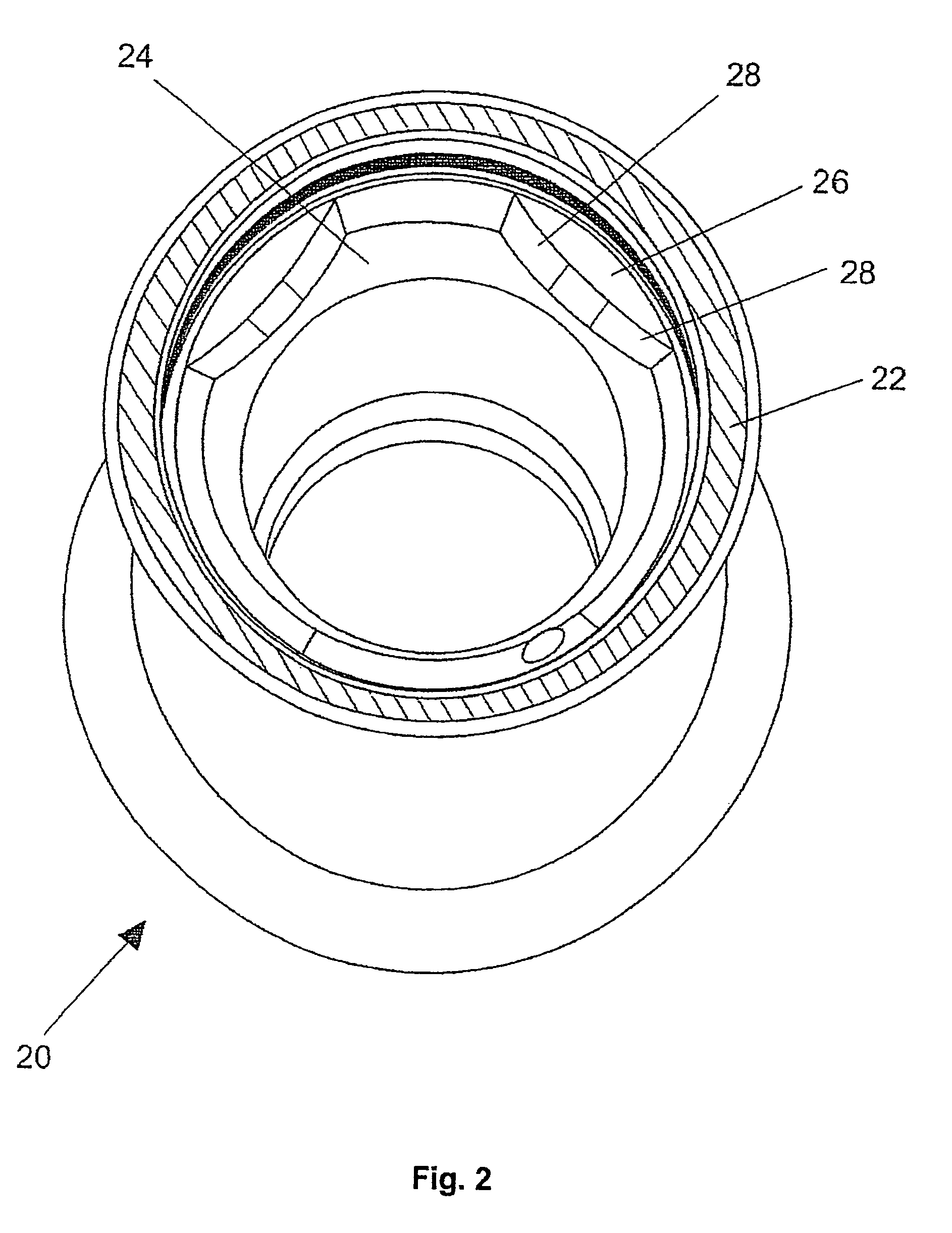Two-part dental implant
a dental implant and two-part technology, applied in dental implants, dental surgery, medical science, etc., can solve the problems of not meeting the above-indicated demands to the desired degree, the transition between the two implant portions, and the known two-part dental implants that cannot meet the above-indicated demands, so as to achieve less compressibility and improve body compatibility
- Summary
- Abstract
- Description
- Claims
- Application Information
AI Technical Summary
Benefits of technology
Problems solved by technology
Method used
Image
Examples
Embodiment Construction
[0132]In the two-part dental implant shown in the specific embodiments a proximal implant portion is formed by a tooth structure stem portion 10 and a distal implant portion is formed by a distal stem portion 20.
[0133]As the perspective view of the tooth structure stem portion 10 shown in FIG. 1 illustrates, it has a longitudinal part 12 of a conical basic geometry which narrows towards the distal end 14 of the tooth structure stem portion 10. The cone angle is 10°. In the region of that conical longitudinal part 12 the tooth structure stem portion 10 has a total of four v-shaped projections 16 which face with their tips towards the distal end 14 of the tooth structure stem portion 10. The four v-shaped projections 16 act as triangular prongs and are symmetrical and are arranged at equal spacings from each other around the periphery of the conical longitudinal part 12 of the tooth structure stem portion 10. That affords eight flank surfaces 18 which face inclinedly towards the dista...
PUM
 Login to View More
Login to View More Abstract
Description
Claims
Application Information
 Login to View More
Login to View More - R&D
- Intellectual Property
- Life Sciences
- Materials
- Tech Scout
- Unparalleled Data Quality
- Higher Quality Content
- 60% Fewer Hallucinations
Browse by: Latest US Patents, China's latest patents, Technical Efficacy Thesaurus, Application Domain, Technology Topic, Popular Technical Reports.
© 2025 PatSnap. All rights reserved.Legal|Privacy policy|Modern Slavery Act Transparency Statement|Sitemap|About US| Contact US: help@patsnap.com



